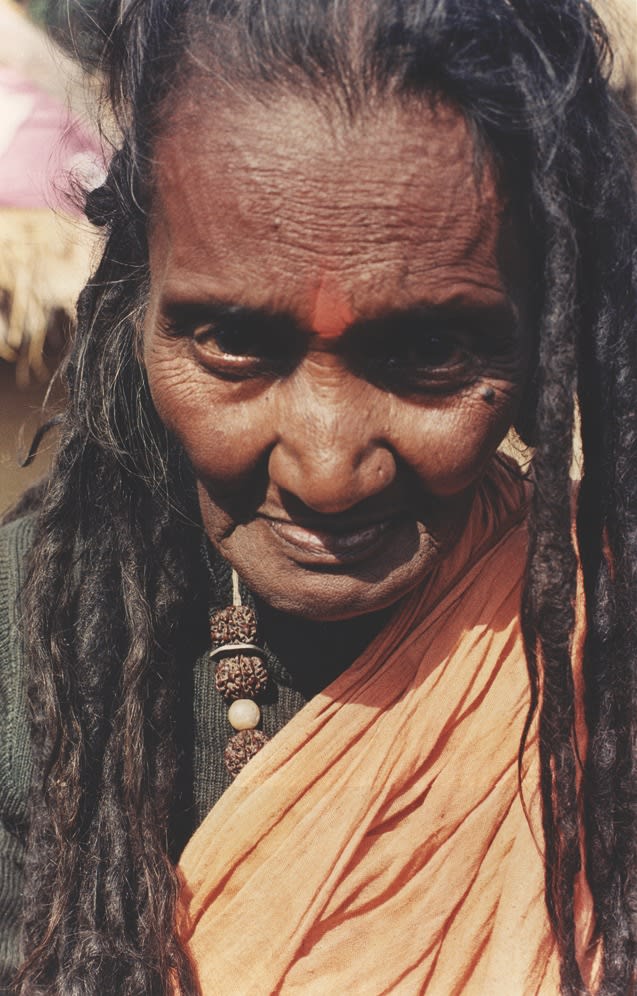










Sheba Chhachhi
11 prints on archival paper and 1 DVD
Further images
-
(View a larger image of thumbnail 1
)

-
(View a larger image of thumbnail 2
)

-
(View a larger image of thumbnail 3
)

-
(View a larger image of thumbnail 4
)

-
(View a larger image of thumbnail 5
)

-
(View a larger image of thumbnail 6
)

-
(View a larger image of thumbnail 7
)

-
(View a larger image of thumbnail 8
)

-
(View a larger image of thumbnail 9
)

-
(View a larger image of thumbnail 10
)

-
(View a larger image of thumbnail 11
)

Eleven women confront the viewer and acknowledge their collaboration in the construction of their representations. The gaze is direct; postures are deliberate, reminiscent of genres of self-presentation in bazaar studio photography. These are transgressive women, not wives, mothers, or daughters but women who have dared to re-invent themselves in relation to the metaphysical. Though contained within seemingly traditional subcultures, their actions and bodily transformations chafe against easily codified definitions of such usually ethnographic subjects. Here, each woman offers an avant-garde performance of self, subverting conventional assumptions about gender, sexuality, domesticity, and female piety. Described as dangerous to the family by the Grih Sutras, an ancient Hindu manual of good conduct for housewives, these wandering mendicants are a contemporary, living link into a rich history of female rebels and mystics in India. Karaikalammaiyar, 4th C A.D. who transforms into a dancing skeleton and signs her cremation ground verse as ‘pey’ (ghoul); Lal Ded the 12th C Sufi who wandered naked; Mirabai dancing with her lover god in a 16th C patriarchal feudal kingdom, spurning the prince who was her husband; Akka Mahadevi reciting startlingly erotic couplets clad only in her long hair...
This set of portraits gathers around a short animation video, using found images from the early 1900s, as well as a series of photographs made over a 10-year-long conversation with an emerging political leader in the ascetic community. The yogini (spiritual adept) posits a self-aware, almost hieratic performance of spiritual power which disrupts and questions the self-conscious nature of the more contemporary portraits. The mahant (religious leader) appropriates the accouterments of hierarchical power, both playful and invested in the political game.
The installation articulates the possibilities of self-transformation, of fluid identities which move beyond normative binaries of masculine/feminine, erotic/ spiritual, contemporary/traditional, and religious/secular.
